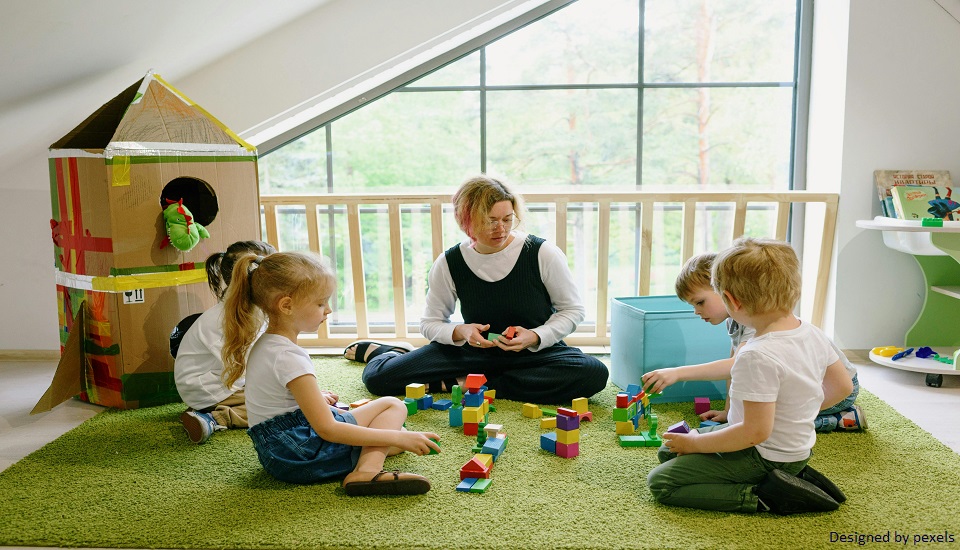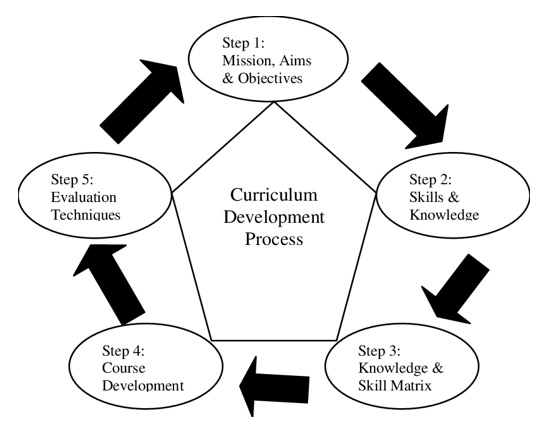Develop A Special Education Curriculum Plan With These 6 Steps
24th July 2024

Administrators, teachers, and parents realizing that not every student learns similarly is one of the most important things in education. Every student deserves the opportunity to learn. School systems must eliminate barriers and give students the resources they require when they have difficulties that prevent them from learning.
In light of this, the following information regarding inclusive education and special education is provided, along with six stages to help you develop a special education curriculum plan.
6-Step Plan To Develop A Special Education Curriculum

Source: www.researchgate.net
If you are struggling in your special education classroom, here are six steps needed to create a special education plan:
1. Identify Student Needs
Preparing a special education curriculum plan begins with a thorough assessment of each student's learning preferences, skills, and problems. To complete this procedure, it may be necessary to examine the student's academic records, carry out diagnostic tests, and get feedback from parents, guardians, and other educators.
Teachers are better equipped to address particular areas of difficulty and foster academic development by customizing instruction and assistance based on a thorough grasp of each student's requirements.
Do you follow us on Social Media? If not, then you’re missing out on a lot of informative content. We regularly share upgraded educational content, tips, feedback, and more. Check us out by clicking the profiles here - Facebook / Twitter / LinkedIn / Pinterest / Instagram / YouTube
2. Establish Clear Objectives
The next stage is to create specific, quantifiable learning objectives that are in line with academic standards and developmental benchmarks once each student's unique requirements have been determined.
These goals must be clear, attainable, and pertinent to the skills and interests of the student. To maximize the potential for student growth and performance, educators may make sure that instruction is targeted and focused by clearly outlining learning goals.
3. Create Individualised Education Plans (IEP)
Under the Individuals with Disabilities Education Act (IDEA), schools for children with disabilities are entitled to particular accommodations, modifications, and support services, which are outlined in Individualized Education Plans (IEPs), which are legal documents.
Teachers should work with parents, guardians, and other IEP team members to create IEPs that take into account the individual needs, objectives, and preferences of each kid. These plans act as the cornerstone for creating a customized curriculum that caters to the various requirements of students who are disabled.
4. Adapt Curriculum Resources
It's crucial to modify curriculum materials and resources while creating a special education curriculum plan to accommodate the various demands of children with disabilities. To make textbooks, worksheets, and other teaching materials interesting and accessible for students with varying learning styles and aptitudes.
This may also include making necessary modifications. To improve student engagement and encourage active learning, instructors should also use a range of multimedia tools, assistive technology, and practical exercises.
5. Offer Differentiate Instruction
A crucial element of a well-designed special education curriculum is differentiated teaching, which enables teachers to adapt their lessons to each student with a disability. To take into account the different learning styles and capacities of the students, this may need to change the instruction's tempo, complexity, and structure.
Educators must offer many channels for representation, expression, and engagement to facilitate equitable access to and participation in the curriculum for all pupils.
6. Implement Evidence-Based Practices
Evidence-based techniques and instructional strategies that have been proven to be successful in helping children with disabilities should be incorporated into special education curriculum plans.
This might involve methods like peer-mediated learning, cooperative learning, and explicit teaching, as well as therapies that focus on particular problem areas like reading comprehension or the development of social skills. Instructors may guarantee that their curriculum is both successful and in line with best practices in the field of special education by making judgments based on data from research.
7. Monitor Progress And Adjust
Planning a successful special education curriculum requires regular evaluation and progress tracking. To monitor academic performance, skill development, and social-emotional growth, educators should routinely assess students' progress toward defined learning goals and objectives.
They can do this by utilizing several assessment methods and approaches. Teachers should change instructional tactics, modifications, and support services to suit developing needs and foster ongoing growth based on assessment results.
8. Foster Communication And Collaboration
To make sure that lesson plans are in line with students' needs and goals, educators should collaborate closely with parents, guardians, and other professionals involved in the student's education.
Establishing regular lines of communication can help to promote continuous feedback, information exchange, and teamwork in curriculum creation and execution. All stakeholders may work together to ensure that curriculum designs are thorough, adaptable, and conducive to student achievement. This can be done by educators.
Set Learning Objectives With Better Planning
Special education teachers may provide meaningful and effective education that supports academic performance, social-emotional growth, and lifelong learning for children with special needs. Additionally, after completing the Master of Arts in Education with Special Education course, educators can become adept in careful planning, adapting, and differentiating their lessons.
We believe education should be accessible for everyone. That’s why we don’t charge for our blogs. Find the right course that will help you in your career with us, contact us at - 1800–212–6400. You can mail us at act@asiancollegeofteachers.com.
Written By : Sanjana











